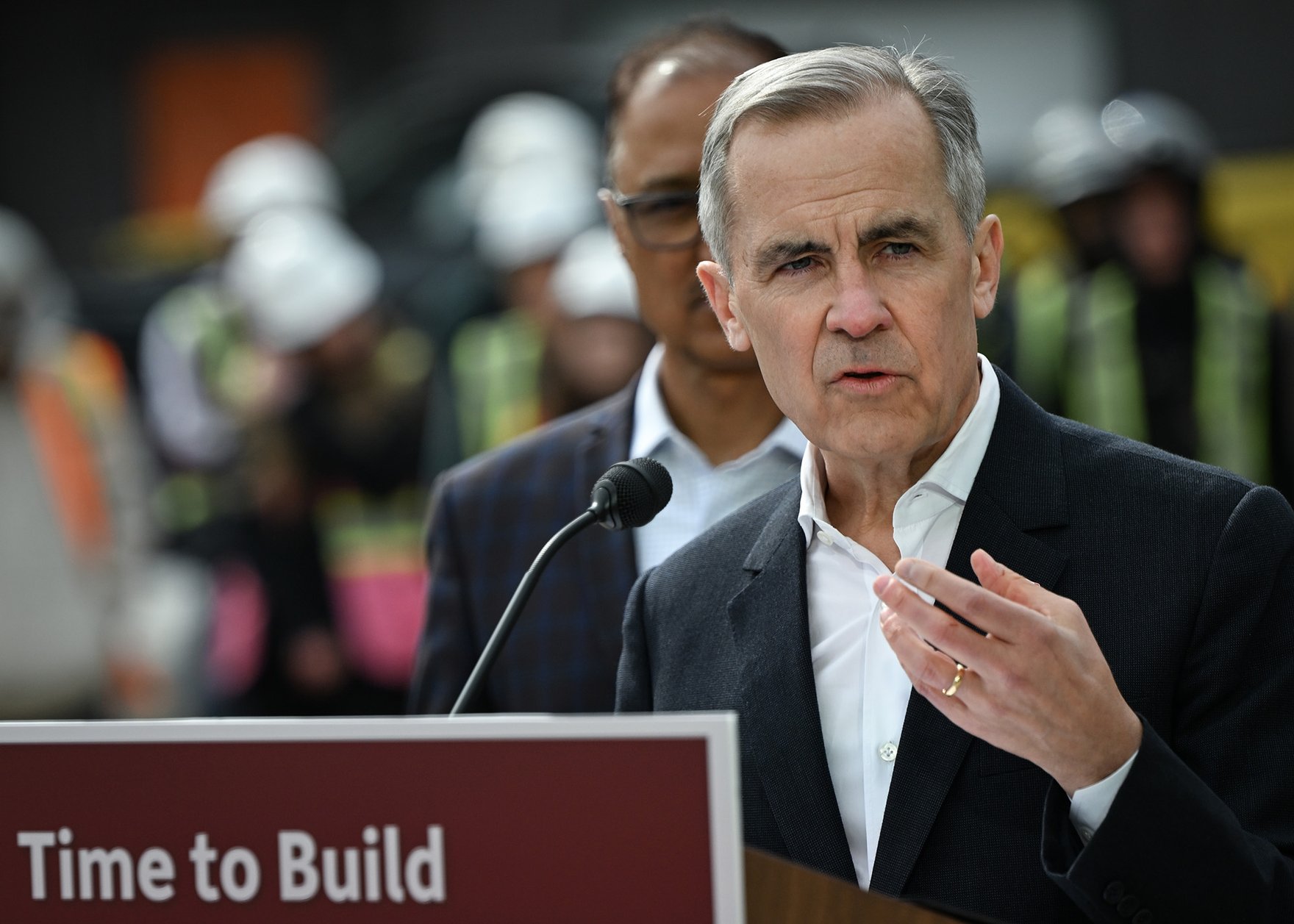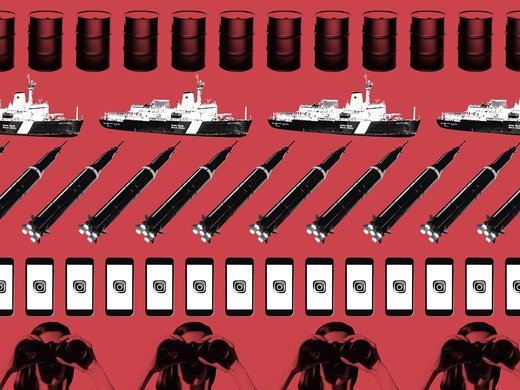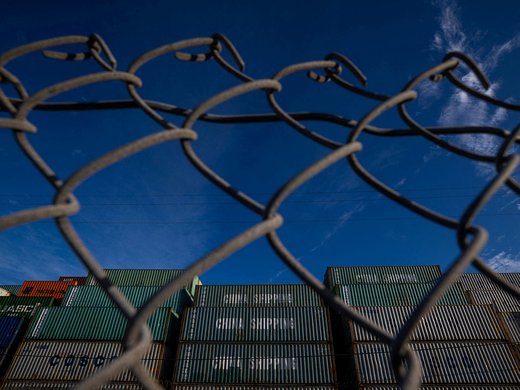As Canadians wake to a new Mark Carney government after the 2025 general election, the reality is stark: North American trade politics have changed. The old assumptions of goodwill, shared interests and special status with Washington are gone. What remains is an arena where power is transactional and loyalty is disposable.
The April 2 “Trade Liberation Day” tariffs delivered a strategic wake-up call. Temporary pauses and carve-outs may have calmed markets, but the underlying message from Washington is clear: “America First” has become “America Only.”
The new Canadian prime minister faces a moment of hard reckoning — but also enormous opportunity. The future is ours to build — if we move with clarity, purpose and courage.
Canada’s Enduring Contributions — and the Urgent Need for a Reset
For decades, Canada operated under the belief it shared a monogamous economic and strategic relationship with the United States. We invested deeply in their prosperity, security and resilience. Yet, as the latest trade salvos reveal, it has often been a one-way partnership.
Canada’s strategic and highly financially beneficial contributions to the United States include:
- Continental defence: Through the North American Aerospace Defense Command and the North Atlantic Treaty Organization (NATO), Canada is a loyal and critical defence partner with boots on the ground, safeguarding North America’s northern approaches.
- Energy security: Canada supplies approximately 60 percent of all US crude oil imports, worth more than $100 billion annually, ensuring stable, reliable energy without geopolitical risk.
- Food security: Canada exports more than $30 billion annually in agricultural products to the United States, helping stabilize food supplies and prices.
- Export market: Canada is the largest foreign buyer of US goods, totalling more than $412.7 billion in 2024, supporting millions of American jobs.
- Massive services importer: Canada imports more than $90 billion in US financial, cloud and digital services annually, bolstering US economic growth and platform dominance.
- Critical minerals: TD Economics reports that Canada provides 16 of the 50 minerals essential to US national security. The development of the Ring of Fire in Northern Ontario will massively increase Canada’s supply of these vital resources.
- Innovation and intellectual property: Canadian taxpayer-funded university research frequently migrates quickly to support American firms, fuelling breakthroughs in artificial intelligence, biotech and digital technologies.
- Brain drain and talent extraction: Thousands of top Canadian science, technology, engineering and mathematics graduates relocate to the United States annually, often groomed through Canadian incubators. American companies have profited from Canadian patents and know-how that have been sold at salvage prices.
- Digital innovation revenues: US tech platforms extract untold hundreds of millions of dollars annually from Canadian sources without adequate compensation while shifting profits through low-tax jurisdictions abroad. For example, Meta Platforms’ revenue includes significant contributions from Canadian users, though exact figures are not publicly disclosed, showing that Canada must insist on transparency for revenues generated from Canadian sources for all platforms.
- Colonial economic model: Historically, Canada has provided low-value resource inputs to the United States, only to repurchase finished goods at a premium — a pattern reflective of colonial economic relationships that persist to this day. It’s like when our crude oil exports are refined into multiple products in the United States and then come back to Canada with big markups.
No one has given America a better deal than Canada. Canada has been the best partner the United States ever had — and the worst rewarded. Yet even that loyalty is met with aggression.
What Canada’s New Prime Minister Needs to Do
Prime Minister Carney must approach Washington not with deference, but with a strategy rooted in game theory and updated as behaviour changes — constantly revising assumptions based on observable behaviour. Game theory offers a sober lens: President Donald Trump is a transactional actor who uses chaos as leverage. He imposes tariffs not to punish trade partners per se, but to extort concessions bilaterally while undermining multilateral norms.
The Trump administration’s trade war offers a painful but necessary opportunity to reassess. We must stop the outdated policies of the past and build an adult trading arrangement — one that rewards Canadian contributions while supporting fair prosperity.
Here’s what the new Canadian government must do immediately to reset the relationship.
Abandon the “Special Relationship” Illusion
Canada must finally discard the diplomatic fantasy that shared values guarantee shared interests. In Trump's Washington, loyalty is transactional, not ideological. Past investments in mutual goodwill — from NATO support to Canada-United States-Mexico Agreement (CUSMA) concessions — mean little if they don’t yield immediate political returns at Mar-a-Lago.
Canada and the United States are codependent with a shared history. Both can hope for better future cooperation despite the impact of clear-eyed realism.
Ottawa must act accordingly: respectful but unsentimental. Trade diplomacy must be pursued like national security — anchored in strategic self-interest, not fraternal nostalgia.
Create a “Conditional Reciprocity” Strategy
Trump’s tariffs are designed to force other nations to the table individually. Canada must turn this tactic inside out. Rather than blanket retaliation, Ottawa should pursue “conditional reciprocity”:
- Offer accelerated market access to US firms in sectors where bilateral cooperation is possible.
- Withhold concessions in politically sensitive sectors unless the United States abides by existing treaty obligations, including, but not limited to, CUSMA.
- Publicize and pursue strategic World Trade Organization (WTO) cases even though enforcement will be slow or impossible — simply to bolster international legitimacy. While there is a risk that even legal victories may not be enforced under current US unpredictability, Canada’s actions would enhance the global rules even if it required Canada to prepare for both lawful and internationally lawless actions by the United States.
This carrot-and-stick model signals both willingness to deal and readiness to escalate if provoked.
Weaponize Canada’s Strategic Assets
Canada’s wealth is not just measured in maple syrup and Mounties. It is the world’s swing supplier of critical minerals, clean energy, food security and advanced intellectual property.
Canada’s critical minerals, clean energy and digital innovations position our country to lead the global green transition — economically, strategically and environmentally. In this way, sovereign economic power can align with sustainable development, allowing Canada to lead not just economically but also environmentally.
The new Canadian prime minister must:
- build coalitions with allies to control supply chains in rare earth minerals, innovation economy standards and energy;
- offer preferential access to allied nations that respect rules-based trade; and
- leverage regulatory alignment as a trustworthy partner (especially on digital trade, innovation and clean energy) as bargaining chips.
Trump respects strength, not virtue. Canada must make itself indispensable — or at least costly to marginalize.
Focus on Regional US Engagement
While the federal government in Washington may appear to act capriciously, American governors, mayors and industry groups remain pragmatic.
The new Canadian government should:
- let Americans know what a good deal they had with Canada for the last 90 years while rebalancing the benefits to be more equitable in future relationships;
- launch a “50-State Strategy” to deepen ties with state and local leaders;
- emphasize how Canadian trade supports US jobs — particularly in key swing states like Michigan, Ohio and Pennsylvania;
- focus on how Canadian goods aid affordability for Americans;
- underscore how Canadian imports of services massively favour the United States; and
- invest heavily in public relations campaigns that frame Canada not as a competitor, but as a vital partner in America’s own prosperity.
Bottom-up pressure can often temper top-down chaos.
Redefine Retaliation
The old logic of “proportional retaliation” must be abandoned. If Canada simply matches every US tariff with a dollar-for-dollar response, it risks mutual destruction without leverage. Instead, retaliation must be:
- Surgical: Targeting US sectors and regions that wield disproportionate political influence.
- Asymmetric: Imposing regulatory friction in ways that hurt more than tariff matching.
- Escalatory: Sending signals that if bad behaviour escalates, so will the costs — not just in trade but also in defence, intelligence cooperation and diplomatic venues.
Retaliation must be smart — a tool of persuasion, not of venting.
Prepare for Legal and Institutional Upgrades
Canada must prioritize negotiating upgrades to CUSMA during the upcoming negotiation. These should include:
- stronger dispute resolution mechanisms immune from “national security” pretexts;
- new provisions protecting against emergency tariff abuses; and
- digital trade standards that prevent tariff escalation through value-added or regulatory taxation.
Meanwhile, Ottawa should lead WTO reform efforts, even if Washington drags its heels. The WTO still has an important role in maintaining trust and the rule of law. These are valuable commodities that Canada supports and should continue to loudly proclaim.
Manage Domestic Expectations
Finally, Canadian leaders must prepare their citizens for a new era of uncertainty. Managing expectations is as critical as managing negotiations. Canadians need to be prepared for short-term sacrifices to build a resilient economy and secure long-term prosperity.
Canada also needs to redouble its efforts to build resilient domestic supply chains as a matter of national security and public policy. This approach entails more attention to domestic options for procurement and having domestic manufacturing capacities.
In any event, these new coming-of-age policies have their own upside, including innovation jobs, critical minerals revenues and digital independence.
Trade friction with the United States is no longer an aberration — it is the baseline. The era of predictable, low-tariff access to the US market is over — at least for now.
By setting realistic expectations at home, the new prime minister can preserve political space to manoeuvre — and avoid being cornered by populist backlash.
Conclusion: A Knife Fight at the Rink
Negotiating with Trump is not a hockey game — it is a knife fight conducted under hockey rules, where your opponent has a shiv in their glove.
Canada must be nimble, unsentimental and Bayesian — constantly recalibrating strategy based on the opponent’s revealed behaviour, not their stated intentions.
A new face in Ottawa offers a rare chance to reset the table. But the stakes are high, the game is brutal and the margin for error is slim.
If Canada plays it smart, it can emerge not just as a resilient trading nation, but also as a global model for strategic adaptation in an era where power is wielded more recklessly than law. Allies and adversaries alike will study how Ottawa responds.
The illusion of “special relationship” sentimentality must end — not with bitterness but with clear-eyed resolve. Canada must act deliberately, securing prosperity and sovereignty for generations to come.
The future is not a gift — it is a construction project. And it is time to build. Because in today’s world, credibility, adaptability and grit are the new reserve currencies.



